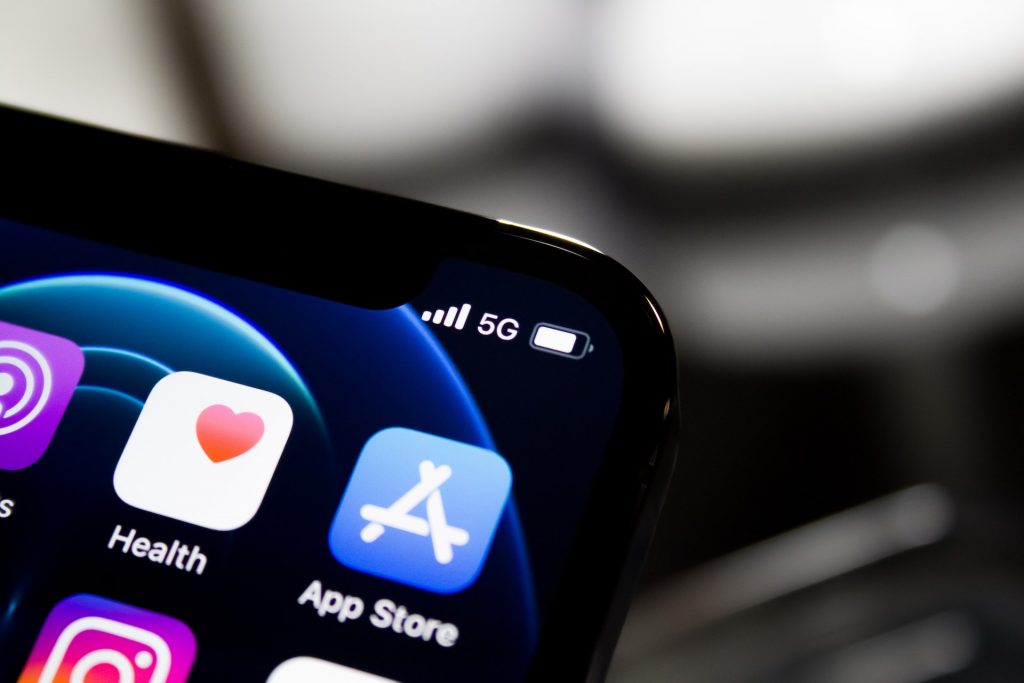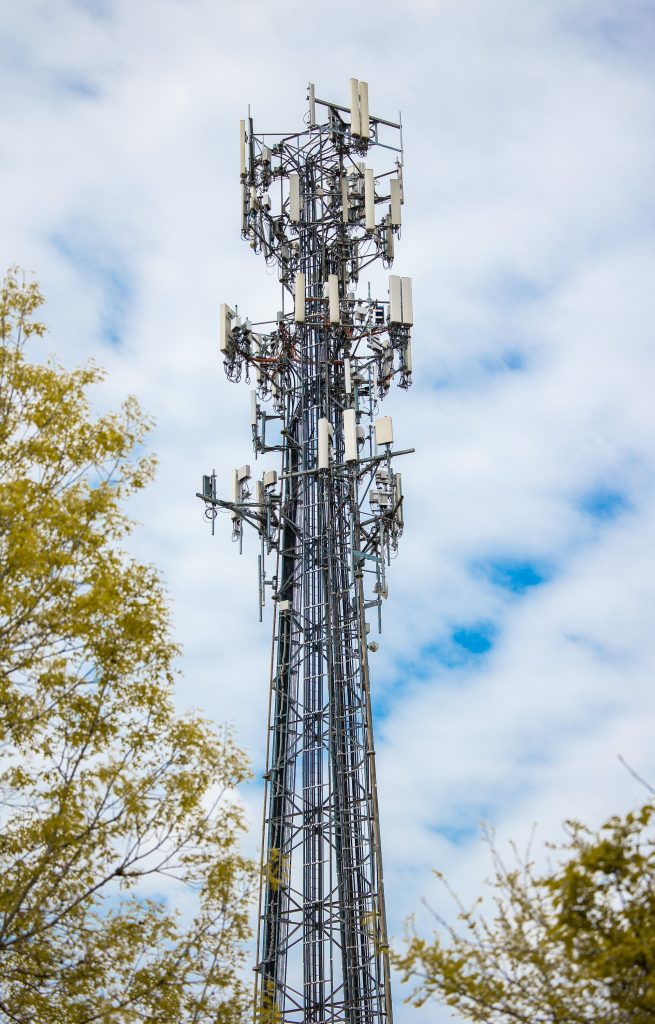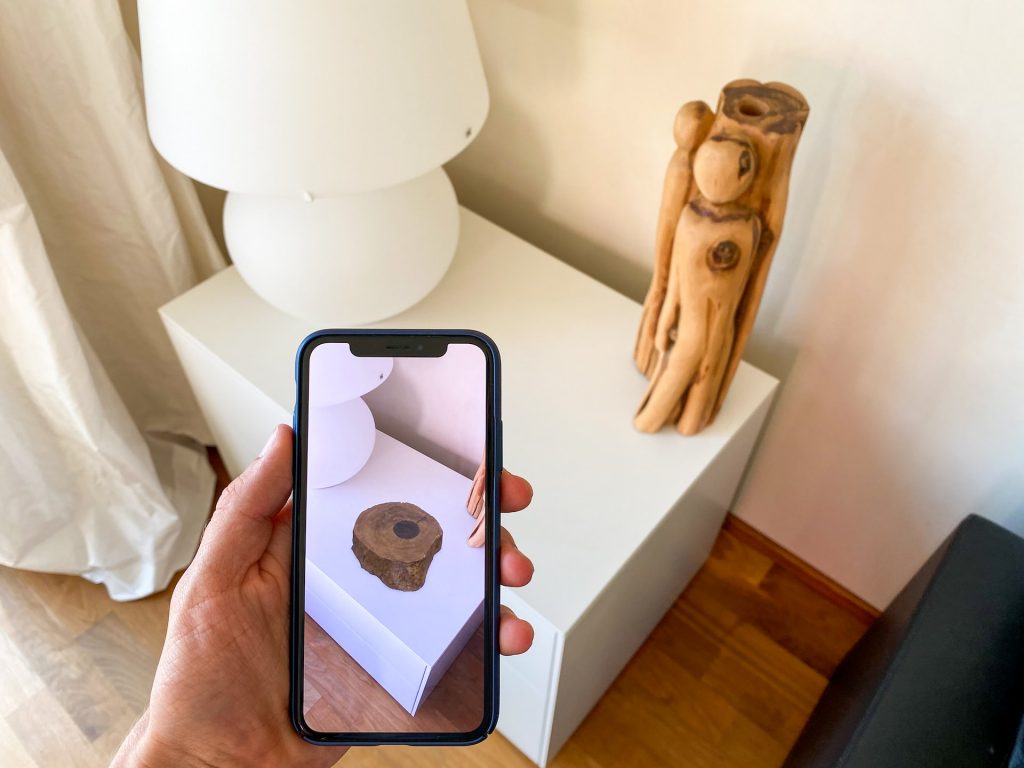
What Is 5G & How Does It Work? (+ The 6G Future) – The Tech Behind Series
Jerry Wallis
21 min read

The advancement of wireless technology has opened up a world of possibilities, revolutionising how we communicate, work and even drive. It’s become a quality of life enhancement that we never envisaged would be so relied upon. But have you wondered what is 5G & how it actually works?
With its higher speeds and greater capacity than ever, the 5G technology, the latest telecommunication innovation, promises to bring faster connections, better performance and access to a whole new range of technologies. But beyond the obvious benefits of 5G lies a fascinating world of technology pushing the boundaries of what’s possible.
From its use of new frequencies and modulation techniques to global connectivity with the potential for new applications in autonomous vehicles and artificial intelligence, there’s no denying that the tech behind 5G is formidable. And as research into 6G emerges, it’s clear that this emerging technology will further propel us into an exciting future.
Not so long ago, 4G was the talk of the town. However, the 5G network has quickly taken that crown, being the latest technological advancement in wireless communication, offering faster speeds and greater capacity than its predecessor. With its ability to connect more devices and support new technologies, such as virtual reality and autonomous vehicles, 5G is changing the world as we know it. But as 5G becomes more widely adopted, attention is already turning to the next generation of wireless technology: 6G.
In this article, we’ll take a closer look at the technology behind 5G and explore what we can expect from the 6G future. This includes the mind-boggling complexity behind 5G and some of its key features. From new frequencies and advanced modulation schemes to the potential for global connectivity and beyond, the future of wireless communication is exciting and full of possibilities.
We’ll also turn our attention to beamforming: a technique that enables directional communication between devices to reduce interference from outside sources.
Finally, we’ll consider how it’s all held together by millimetre wave (mmWave) communication: high-frequency radio waves used in mobile communication with speeds up to 20 Gbps – way faster than 4G networks. As well as considering these unique aspects in detail, we’ll explore how all these technologies come together, offering enhanced capabilities, increased capacity and improved coverage — providing consumers with unprecedented access to data-driven services.
It’s safe to say that when it comes to 5G tech, there’s much more going on under the surface than meets the eye! So join us as we take a closer look at this incredible feat of engineering – unlocking the hidden secrets behind one of today’s most advanced wireless technologies. It’s the tech behind the 5G network!
What Is 5G? 📲
In the most basic and straightforward definition, 5G is the fifth generation of mobile communications networking. It builds upon its predecessor, 4G, launched in late 2009 by TeliaSonera in Sweden and Norway.
5G is, in more ways than one revolutionising how we access the internet and communicate with one another. 5G networks offer dramatically faster download and upload speeds, ultra-low latency for near-instantaneous communication between devices, improved network reliability, and higher-power efficiency. This allows users to do more than ever, such as streaming UHD content in real-time, using VR/AR applications without lag, or simply surfing the web at blazingly fast speeds.
5G’s enhanced data transfer rate makes downloading huge files or streaming high-quality video content almost instantaneous. Furthermore, 5G supports massive machine-type communication (MTC) – meaning a device can communicate with multiple other devices simultaneously – reducing overall network latency significantly.
5G boasts several other advantages over its predecessor, 4G, such as:
- Increased spectral efficiency that improves bandwidth,
- Improved mobility which reduces signal irregularity and disconnection,
- Improved coverage through small cell deployments, and
- More advanced interference management techniques enable better system throughputs.
These benefits combine to help drive down costs while increasing capacity and performance.
Significantly enough, 5G technology opens up a world of possibilities both now and in the future, allowing us to experience lightning-fast speeds with ultra-low latency for near-instantaneous data exchange between devices – no matter where you’re located! As our dependence on technology increases, so will our reliance on this robust network, revolutionising how we live each day.
Offering lightning-fast data speeds of multi Gbps, ultra-low latency for near-instantaneous communication between devices and improved reliability across public networks and private IoT systems, ushering in a new era of connectedness that will redefine how we live life each day. Whether at home or out on the go –the possibilities are endless with the 5G network!
How Much Of An Upgrade Is 5G From 4G? ⚖️
5G is a significant leap forward in mobile communication technology that has overhauled our interaction with our devices and each other. The increased speed, connectivity, and security create new opportunities for businesses and consumers. Let’s take a closer look at the level of improvement 5G has made from the previous generation.
📈 Better Overall Performance
The increased speed is one of the most notable differences between 5G and 4G. 5G networks can provide download speeds up to 20 times faster than 4G networks, allowing for faster streaming, downloading, and browsing.
The theoretical peak speed of 5G is believed to be around 20 Gbps, while the peak speed of 4G is only 1 Gbps. This allows users to stream video content without buffering or lagging, download large files in seconds instead of minutes, and browse the web more quickly and smoothly.
📶 Improved Connectivity
Despite earlier generations of cellular technology, such as 4G LTE, focused on ensuring connectivity, 5G takes connectivity to the next level by delivering connected experiences from the cloud to clients.
5G networks are virtualised and software-driven and fully exploit cloud technologies. This cloud-driven technology ensures smooth connection even remotely, with configuration updates delivered automatically. In addition, the distributed architecture reduces complexity for end users by making it easier for them to access service providers and receive updates when necessary.

🏋️ Higher Capacity
5G networks have a greater capacity than 4G networks, allowing more devices to connect simultaneously. This means that 5G networks can support more users and devices in crowded areas, such as stadiums or city centres.
⏩ Lower Latency
Latency refers to the time it takes for a packet of data to travel from a device to a network and back. For example, 5G networks have lower latency than 4G networks, meaning that data is transmitted and received faster, making it suitable for virtual reality and autonomous vehicle applications.
5G’s lowered latency can improve the performance of business applications and other digital experiences such as online gaming, videoconferencing, and self-driving cars.
📻 Higher Frequency
5G networks operate on a higher frequency than 4G networks. This means that 5G networks can transmit data over shorter distances but with higher bandwidths.
The higher frequency also allows for smaller cells, which means that 5G networks can be more densely deployed, providing better coverage and capacity in urban areas.
🌐 Network Slicing
Network slicing is an intuitive concept in 5G that allows for creating multiple virtual networks on top of a shared physical infrastructure. Each virtual network, or “slice,” can be customised to meet the specific requirements of different types of users or services. For example, a slice could be created for high-bandwidth applications like virtual reality, while another slice could be optimised for low-latency applications like Tesla’s self-driving vehicles.
Network slicing works by allocating resources, such as bandwidth, processing power, and storage, to each slice on an as-needed basis. This allows for more efficient use of the underlying infrastructure, as resources can be allocated where they are needed most. Additionally, network slicing can also be used to create secure and isolated environments for sensitive applications, such as industrial control systems.
5G networks, through this slicing technology, have the ability to create different virtual networks that can be customised to meet the specific requirements of different types of applications – ensuring the most efficient use of network resources. In contrast, network slicing in 4G is vastly limited and is restricted to isolating a service within a shared networking infrastructure.
📟 Internet of Things (IoT)
Internet of Things (IoT) refers to the interconnectedness of physical devices, such as appliances, vehicles, and industrial equipment, that are embedded with sensors and connectivity capabilities that allow them to collect and share data. IoT devices can be controlled remotely and communicate with one another, enabling a wide range of applications such as automation, monitoring, and control.
In 4G networks, the number of connected devices was limited, and the data transfer rate needed to be higher to support the large amount of data generated by IoT devices. With 5G, the network’s increased capacity and speed can handle a much larger number of connected devices, and the low latency of 5G networks enables real-time communication between devices. In addition, 5G’s network slicing capabilities also allow creation of specific virtual networks dedicated to IoT devices with different requirements, further aiding this digital phenomenon.
5G also supports new technologies such as edge computing, which allows data to be processed at the edge of the network, closer to the source, rather than sending all data back to a central location for processing. This can reduce latency and improve the responsiveness of IoT applications.

The History Of 5G – The Complete 5G Origin Story ⌛
The development of 5G technology can be traced back to the early 2000s when the International Telecommunication Union (ITU) began identifying the requirements for the next generation of mobile communication networks. In 2008, the ITU officially designated the term “5G” to refer to the next significant evolution of mobile networks.
The origins of 5G can be further attributed to the work of various companies and research institutions, who began researching and developing the technology that would eventually become 5G. One of the key players in the early stages of 5G development was the European Union’s 5G Infrastructure Public Private Partnership (5G PPP), established in 2013 to accelerate the development and deployment of 5G networks in Europe.
Several companies and organisations have been working on developing and standardising 5G technologies. Some of the critical contributors include Qualcomm, Ericsson, Nokia, Samsung and Huawei. They have been working on different aspects of 5G, such as millimetre wave technology, advanced modulation schemes, beamforming, and network slicing.
The first 5G network was launched in April 2019 by South Korean carrier SK Telecom, followed by other countries and carriers establishing their 5G networks. Since then, 5G networks have been rapidly deployed worldwide, with many countries offering 5G coverage to their citizens.
It’s worth noting that 5G is not just a technology but also a standard developed by 3GPP (3rd Generation Partnership Project), an industry organisation responsible for standardising cellular technologies like GSM, 3G, 4G, and 5G.
In summary, 5G is the result of years of research and development by various companies and organisations, intending to create a faster and more efficient mobile network that can support new technologies and applications. 3GPP is developing the standardisation of the technology, and the first 5G network was launched in 2019.
How Does 5G Work? ⚙️
5G networks are a next-generation wireless communication system that utilises advanced technologies to provide faster and more efficient mobile networks. Let’s now explore these in detail.
〰 Millimeter Wave & New Radio Technologies
At its core, 5G technology is built upon a new radio interface designed to support higher frequencies and faster data rates than previous generations of mobile networks. 5G networks use millimetre wave technology and operate on a higher frequency than 4G networks. This allows for smaller cells and more densely deployed networks, providing better coverage and capacity in urban areas. However, millimetre wave signals have a shorter range and are more susceptible to interference, requiring a dense network of small cells to provide adequate coverage.
Both of these technologies enable operation at higher frequencies than previous generations. So, how are they different exactly? Or are they the same? The new radio interface and millimetre wave technology are not the same in 5G, but they are related.

The new radio interface in 5G refers to how data is transmitted over the air. 5G’s New Radio (NR) is designed to be more flexible and efficient than the radio interfaces used in previous generations of cellular technology. NR supports a wide range of frequencies, including sub-6GHz and millimetre wave (mmWave) bands, and uses advanced modulation and multiple-input multiple-output (MIMO) techniques to increase capacity and improve coverage. We’ll cover these concepts in the section coming up.
On the other hand, millimetre wave technology refers to the use of frequencies in the millimetre wave band, which is a range of frequencies between 30GHz and 300GHz. These frequencies are higher than those used in previous generations of cellular technology and offer a much more significant amount of available bandwidth. This enables higher data transfer rates and more capacity for many users.
However, millimetre wave signals are more sensitive to obstacles and have less coverage than sub-6GHz frequencies. For instance, 5 GHz networks cannot penetrate solid objects, such as walls, nearly as well as 2.4 GHz signals do. This can limit access points reach inside buildings like homes and offices where many walls may come between a wireless antenna and the user.
🔃 Massive MIMO
One of the critical technologies that enable 5G networks is Massive MIMO (Multiple Input Multiple Output) technologies. MIMO is a technique that uses multiple antennas at the transmitter and receiver to increase the capacity and coverage of the network. In Massive MIMO, the number of antennas is increased dramatically, which allows for much higher power and improved performance.
☁️ Cloud-Service Integration
Another important aspect of 5G technology is its integration with cloud services. 5G networks use cloud-native architectures that allow for the virtualisation of network functions and services, enabling more efficient resource use and faster deployment of new services.
This integration with cloud services enables 5G networks to provide a more flexible and scalable infrastructure, which is necessary to support the growing demand for data and the increasing number of connected devices.
At its core, 5G architectures are software-defined platforms that manage networking functionality through software rather than hardware. However, advancements in virtualisation, cloud-based technologies, and IT and business process automation enable 5G architecture to be agile and flexible and provide user access anytime, anywhere.
🔢 Advanced Modulation
5G networks also use advanced modulation schemes to increase the amount of data transmitted over the airwaves. This allows for higher data rates, faster streaming and downloading, and more responsive online experiences.
Advanced modulation in 5G enables more users and efficient use of the available spectrum. In addition, it allows the transmission of more data in a given spectrum by using advanced modulation schemes, such as:
- Orthogonal Frequency Division Multiplexing (OFDM): An extension of the traditional Frequency Division Multiplexing (FDM) technique. It divides the available spectrum into smaller subcarriers and independently transmits data on each subcarrier. This allows for more efficient spectrum use and reduces the interference effect.
- Non-Orthogonal Multiple Access (NOMA): A multiple-access technique allowing multiple users to share the same frequency band using different power levels. It enables improved spectral efficiency and better user fairness. This technique can be used for both uplink and downlink communication.
- Filter-Bank Multi-Carrier (FBMC): Uses a filter bank to divide the available spectrum into subcarriers. The filter bank minimises interference between subcarriers, improving the signal-to-noise ratio and increasing the system’s capacity.

📡 Beamforming
Another critical technology used in 5G networks is beamforming, which uses multiple antennas to transmit a signal in a specific direction rather than in all orders. By focusing the signal in a particular path, beamforming can increase the capacity and coverage of the network.
Beamforming improves the coverage and capacity of wireless networks by directing the radio signal towards specific areas, or “beams.” This is accomplished by using multiple antennas at the base station and adjusting the phase and amplitude of the signal emitted from each antenna to create a beam directed towards a specific area.
In 5G, beamforming ensures stronger signal strength and quality of the wireless connection for specific users or devices by focusing the signal energy in their direction. This can be done in both downlink and uplink scenarios, where the base station and the appliance can use beamforming to communicate. Beamforming also helps improve the network’s capacity by creating multiple beams that can be directed towards different areas simultaneously.
Additionally, beamforming is also used to improve the wireless connection’s security by creating beams directed towards specific users or devices, making it more difficult for unauthorised users to intercept the signal.
🔐 Advanced Security Initiatives
In addition to these core technologies, 5G also uses advanced security measures, such as network function virtualisation (NFV) and software-defined networking (SDN), to protect against security threats and ensure that the network is reliable and resilient.
🤖 Machine Learning & Artificial Intelligence
5G also enhances digital experiences through machine learning (ML) enabled automation. Demand for response times within fractions of a second (such as those for self-driving cars) requires 5G networks to enlist automation with ML and, eventually, deep learning and artificial intelligence (AI).
Automated provisioning and proactive management of traffic and services will reduce infrastructure costs and enhance the connected experience.
To summarise, 5G technology is a complex system that uses advanced technologies such as NR, Massive MIMO, integration with cloud services, advanced modulation schemes, network slicing and advanced security measures to provide faster and more efficient mobile networks. These technologies enable 5G networks to support new technologies and applications such as virtual reality, autonomous vehicles, and IoT, which will revolutionise how we live and work.
How Can Businesses Leverage 5G Technology? 👩💻
Businesses can use 5G technology to improve their operations and gain a competitive advantage. Some key ways companies can leverage 5G technology include the following.
🌟 Bolster Your Customer Experience With Contemporary Technologies
5G networks can support new technologies, such as virtual and augmented reality (VR & AR), which can be used to enhance the customer experience. For example, businesses can use VR & AR to provide immersive shopping experiences or provide interactive product demonstrations, just as how L’Oreal is using AR to improve customer experience.

📞 Better Communication
5G networks offer faster speeds and greater capacity than 4G networks, which means businesses can connect more devices and support more applications. This can help companies to improve collaboration and communication, as well as streamline their operations.
🏭 Industrial Automation
5G networks support low-latency, high-bandwidth applications, which makes them ideal for industrial automation and machine-to-machine communication. This can help businesses to increase efficiency, reduce costs and improve the quality of their products and services.
🛰️ Remote Working
The pandemic has highlighted the unsettling truth that nothing is certain. Thankfully, advances in technology have made it possible for remote working to become a reality – 5G networks power teleconferencing and give companies more freedom than ever before, allowing employees to work from anywhere at any time whilst offering businesses some cost-saving benefits. This includes outsourcing software development more effectively than ever before.
💻 Digital Innovation
5G networks can connect many devices with low power consumption and low latency, essential for IoT applications such as smart cities, industrial automation, and connected cars. Businesses can use this to access valuable data, automate processes and improve the overall performance of their operations.
📊 Advanced Analytics
The increased capacity and speed of 5G networks can enable data collection, transfer, and processing from a wide range of sources, including IoT devices and edge devices.
An example is in the field of autonomous vehicles, where 5G networks can connect vehicles to the network, allowing for real-time communication and data exchange between vehicles and the infrastructure. This can enable the use of advanced analytics to optimise traffic flow, reduce accidents, and improve the overall safety and efficiency of transportation.
5G’s edge computing capabilities also enable advanced analytics, as data can be processed closer to the source, reducing the amount of data that needs to be transferred to a central location for processing, leading to faster results and less latency.
🛡️ Enhanced Security & Fraud Prevention
5G networks support advanced authentication and authorisation mechanisms, such as multi-factor authentication and secure key management, which can help to prevent unauthorised access to the network and protect against fraud.
With 5G, it is also possible to have a single physical infrastructure supporting multiple virtual networks that can be isolated from each other, helping prevent attacks from spreading across networks and causing damage.
The Future Of 5G & Rise Of 6G 🔮
The future of 5G will likely involve continued expansion and improvement of the technology, focusing on increasing coverage and capacity and reducing costs. A recent innovation by Nokia, 5G-Advanced, is set to unlock 5G’s true potential to the fullest. 5G-Advanced will take connectivity to a whole new level. You’ll be able to experience extended reality (XR) in an immersive way and tap into ultra-precise location and timing services. Plus, with AI/ML, data collection and analytics becoming more sophisticated than ever before, you can fully optimise energy efficiency and network management before and get ready for the future now.
6G will logically be the next generation of mobile networking, currently in the research and development phase. To better performance, 6G is expected to offer even faster speeds, lower latency than 5G, and enhanced capabilities such as extended battery life and the ability to connect to a more significant number of devices.
6G is also anticipated to enable ground-breaking applications and services such as holographic communication and precision agriculture. However, 6G is still developing, and its commercial availability has yet to be expected, at least in this decade.
Today, the early vision for 6G is starting to emerge as mobile, and the broader vertical ecosystems embark on foundational technology research preparing for the next decade of innovations. While we are still quite a few years away from commercial launches of the 6G platform, we are confident of one thing: 6G will bring technology leaps, new experiences, and use cases that we can barely imagine today.
Why Is 6G Needed? 🤷♂️
Even though 6G is not yet fully defined and is still under research and development. However, it is expected that 6G will build upon the capabilities of 5G to address some of its limitations and provide new stuff for a wide range of applications. At a high level, these are some of the main driving forces:
- Harnessing technological advancements in wireless and adjacent areas like semiconductors and materials science.
- Meeting societal sustainability needs such as economic growth, digital access, and green initiatives.
- Addressing new requirements for next-level experiences that cannot be met with 5G, such as better capacity and coverage to accommodate ever-evolving data-intensive applications.
- 6G is expected to provide global coverage, including in remote and rural areas and for in-flight and at-sea communications.
- 6G will also address the risk of Quantum computing, which could break the encryption used in 5G and previous generations by providing quantum-safe security mechanisms.
- 6G could also provide a stunning breakthrough in seamless communication between networks, including satellite and terrestrial networks, to enable new applications such as global mobility and satellite-terrestrial converged services.
To efficiently meet these objectives, 6G will have to be a more competent platform that brings more than just a new radio design; it is envisioned to encompass a broader range of technologies further to expand the connected, intelligent edge at scale.
6G will fully unleash the combined potential of communications, artificial intelligence (AI), integrated sensing, system resiliency, and greener networks.
Final Words – 5G For The Win! 🏆
In conclusion, the 5G network revolutionises how we connect to the world around us. With faster speeds and lower latency, it enables a wide range of new applications and services that were previously impossible.
Utilising advanced spectral management technologies such as network slicing, beamforming, frequency modulation, and cloud-driven architecture, 5G is a massive upgrade over 4G providing faster speeds, greater capacity, lower latency, and unprecedented support for IoT devices.
As we look towards the future, the development of 6G is promising to take this technology to the next level, with even faster speeds, lower latency, and enhanced capabilities.
The future of 6G is not just promising; it is downright exciting. Imagine holographic communication, precision agriculture, and battery life like never before, all made possible by 6G. The possibilities are endless, and the future is bright for wireless communication.
If you want to upgrade your organisation’s technology and boost customer experience, book a discovery call with our team today. Technology is transforming how we explore the world around us in unimaginable ways. So let’s take the next step together and discover what lies ahead to get your business to the next level.
Topics
Published On
January 20, 2023

